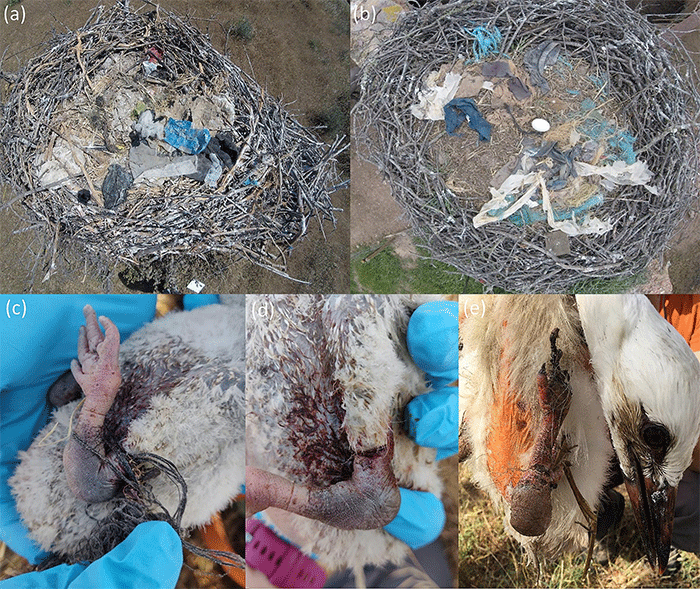Twine or Trap? Farming Practices Under Fire for Wildlife Deaths
Conservationists call for a ban as agricultural waste tangles White Stork chicks in a lethal embrace.

Widespread use of human-made materials in nests
A four-year study of White Stork (Ciconia ciconia) nests in southern Portugal has uncovered alarming levels of anthropogenic nest materials (ANMs), with 91% of nests containing items like plastic, rope, fabric and paper. The research, which monitored 568 nests across 32 colonies, found that ropes - especially agricultural baler twine - were present in 42% of nests and were the leading cause of fatal entanglements among chicks.
These ANMs, often picked up from agricultural and urban landscapes, included soft plastics, baler wrap, woven plastic sheeting, and even pieces of sponge and cardboard. Though not all materials were equally hazardous, ropes stood out: they accounted for 63% of all entanglement cases and were strongly linked to chick mortality.
Fatal entanglements start early in development
Nestling entanglement was not only common - affecting 12% of all chicks in the 93 intensively monitored nests - but occurred at a very young age, typically around two weeks old. Injuries included deep lacerations, necrosis, and amputations. Some chicks became entangled multiple times, even after rescue efforts removed the offending materials.
The likelihood of entanglement rose steeply with the number of ropes in a nest. In one extreme case, a single nest contained up to 22 pieces of rope. Statistical models confirmed that each additional rope increased the risk of chick entanglement and death, with mortality rising by 17% for every added rope.
Baler twine identified as the most dangerous item
Among all rope types, baler twine - the polypropylene cord widely used to bind hay and straw - was by far the deadliest. It caused nearly half of all entanglements and was particularly prevalent in areas dominated by arable farmland and agro-forestry systems.
Despite not being the most abundant ANM overall, baler twine's strength, flexibility and tendency to fray into fine strands made it exceptionally hazardous. Once inside a nest, it often wrapped tightly around chicks’ legs or wings, cutting off circulation and causing irreversible damage.
Entanglement risk tied to surrounding land use
The study found that rope-containing nests were significantly more common in colonies surrounded by non-irrigated farmland and agro-forestry habitats. Surprisingly, proximity to landfill sites - while often associated with stork foraging behaviour - was not a strong predictor of rope presence in nests.
These findings highlight how agricultural landscapes, especially those where baler twine is widely used and poorly managed, serve as a key source of deadly nesting material. In many regions, twine is discarded or buried in the fields, remaining in the environment for decades due to its slow degradation rate.
Global problem with local solutions
Though the study focused on White Storks in Portugal, the issue has a much wider scope. Baler twine entanglements have been documented in other bird species globally, including Ospreys, Southern Caracaras and even endangered Lesser Kestrels. Similar threats have been recorded in Black Storks and corvids, suggesting that many terrestrial birds are at risk.
Unlike some forms of marine plastic pollution, terrestrial entanglement hazards such as baler twine have received limited policy attention. A few local awareness campaigns and trials of biodegradable alternatives exist, but recycling efforts remain patchy and impractical for many farmers. The researchers argue for a return to biodegradable materials like sisal, alongside urgent regulation and environmental clean-up efforts.
Urgent need for policy change
With polypropylene baler twine responsible for avoidable deaths and suffering among nestlings, the authors urge policymakers to treat this material as a serious environmental hazard. Past successes in banning other harmful plastic products, such as six-pack rings and single-use bags, show that coordinated legislative action is possible.
The White Stork - often regarded as a flagship species for biodiversity - is sounding the alarm. Its visible struggle with plastic pollution in the heart of agricultural Europe underscores a hidden crisis affecting many more birds. The message is clear: to protect future generations of wildlife, we must clean up our nests.
July 2025
Share this story







